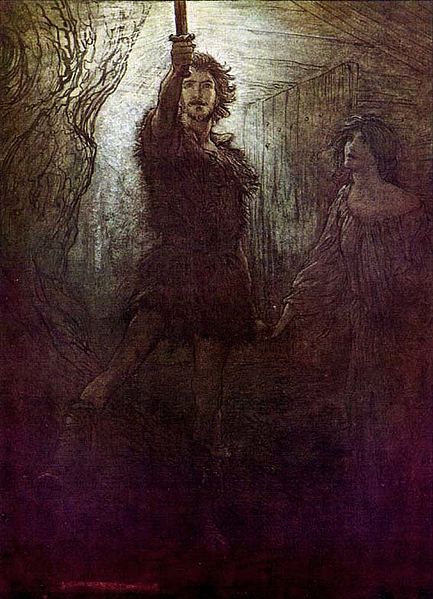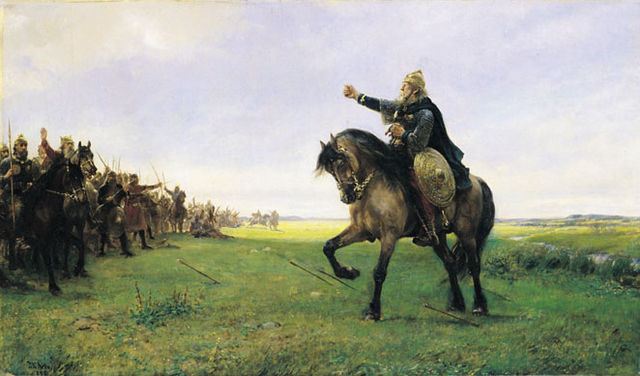Dietrich von Bern is the name of a character in Germanic heroic legend who originated as a legendary version of the Ostrogothic king Theodoric the Great. The name "Dietrich", meaning "Ruler of the People", is a form of the Germanic name "Theodoric". In the legends, Dietrich is a king ruling from Verona (Bern) who was forced into exile with the Huns under Etzel by his evil uncle Ermenrich. The differences between the known life of Theodoric and the picture of Dietrich in the surviving legends are usually attributed to a long-standing oral tradition that continued into the sixteenth century. Most notably, Theodoric was an invader rather than the rightful king of Italy and was born shortly after the death of Attila and a hundred years after the death of the historical Gothic king Ermanaric. Differences between Dietrich and Theodoric were already noted in the Early Middle Ages and led to a long-standing criticism of the oral tradition as false.

Scene from the poem Virginal: Dietrich von Bern and Hildebrand fight against dragons. Note that Dietrich is breathing fire. UBH Cod.Pal.germ. 324 fol. 43r
Theodoric's fight against Odoacer imagined as a joust, 1181 from Verona. Vatican Library Cpl 927
Carving in the church portal of San Zeno Maggiore in Verona that may depict Theodoric, marked as regem stultum (stupid king), being carried to Hell by an infernal horse (c. 1140).
The Rök stone, one of the earliest mentions of Theodoric in Germanic legend
Germanic heroic legend is the heroic literary tradition of the Germanic-speaking peoples, most of which originates or is set in the Migration Period. Stories from this time period, to which others were added later, were transmitted orally, traveled widely among the Germanic speaking peoples, and were known in many variants. These legends typically reworked historical events or personages in the manner of oral poetry, forming a heroic age. Heroes in these legends often display a heroic ethos emphasizing honor, glory, and loyalty above other concerns. Like Germanic mythology, heroic legend is a genre of Germanic folklore.
Hagen kills Siegfried while the Burgundian kings Gunther, Giselher, and Gernot watch. Julius Schnorr von Carolsfeld, 1847.
A depiction of Sigmund by Arthur Rackham.
"Neither the Huns nor their hornbows make us afraid!" The Geatish king Gizur challenges the invading Huns to a pitched battle on behalf of the Goths, from the Scandinavian epic poem Battle of the Goths and the Huns, which preserves place names from the Gothic rule in South-Eastern Europe. Painting by Peter Nicolai Arbo, 1886.
The shieldmaiden Hervor dying after the Battle of the Goths and Huns, by Peter Nicolai Arbo, before 1892.








